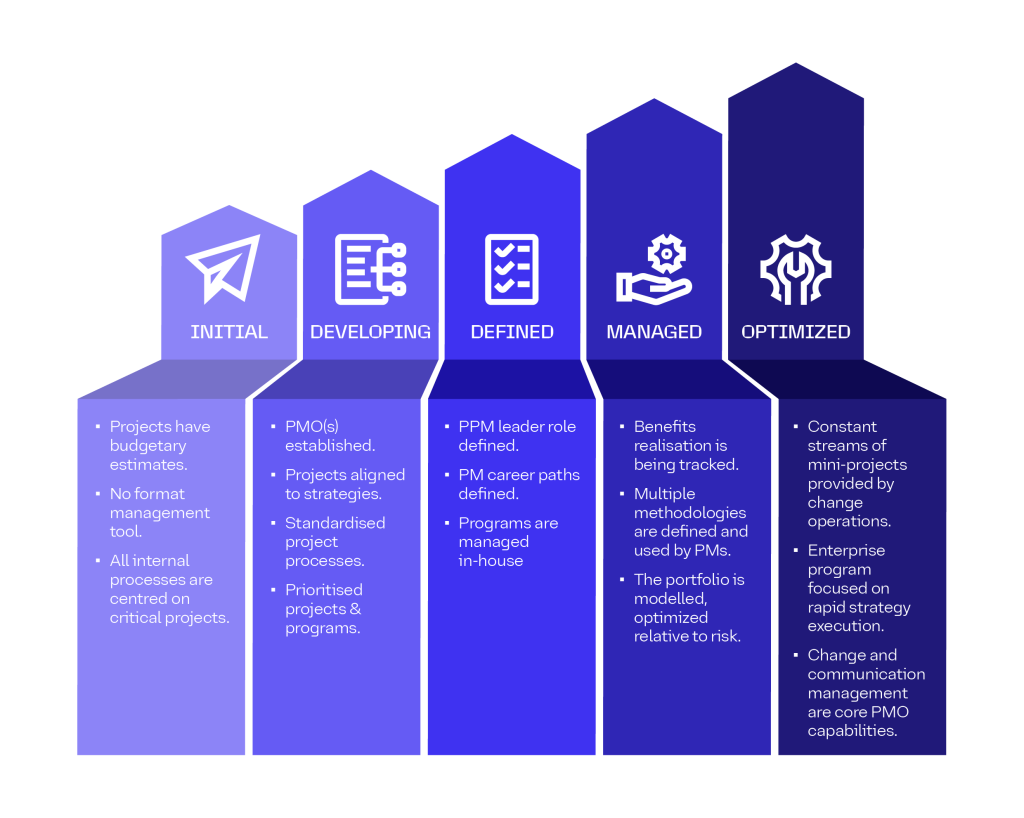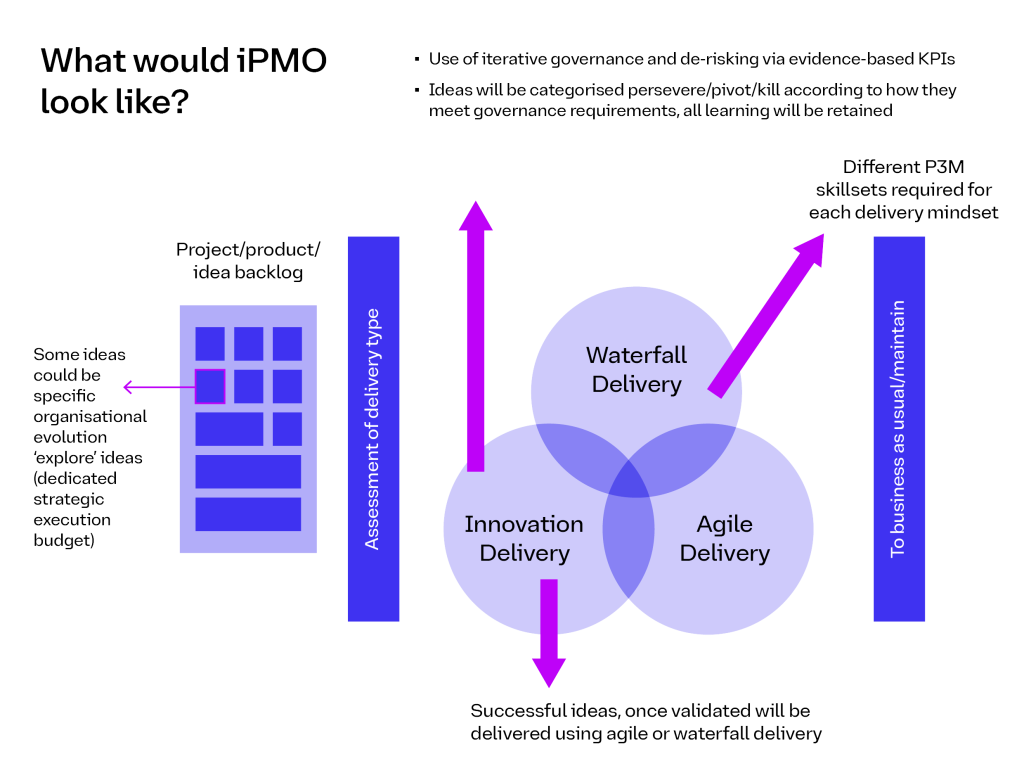Could P3M Be The Place To Manage Innovation?

What is – and isn’t – innovation? It’s often seen as flashy and exciting; a buzzword on CVs and something we all strive to do. But scratch slightly below the highly polished veneer of innovation and most people might give you a bit of a shrug when you question ‘but really… what is it?’
To me, innovation is the creation and capture of value through the exploitation of ideas. Importantly, the idea itself is not the innovation. But to really innovate and take any idea forward, you need evidence of value. The aim of the game is to design the right experiments to take you from problem discovery through to validation, knowing your solution is going to provide customer value. Along the way, you should expect to need to recalibrate leaders’ expectations of what type of evidence, and how much, they can expect to see.
Successful innovation in companies and organisations allows for adaptability, growth, and therefore a competitive edge – three things everyone striving for a successful business wants. But how do you fit all this creation, value capture, exploitation of ideas, experimentation, evidence gathering, leadership convincing, etc. into your delivery landscape? As I see it, you have two options: one being to set up a dedicated innovation area or function filled with experts, and the other to find a suitable home within an existing function or area.
Expanding the P3M remit
A perfect area for innovation lies within your extant project, programme and portfolio management (P3M) department or office (P3O). With many P3M functions (including PMO) famed for their delivery skills, governance, metric management and guardrails for delivery, why wouldn’t we look to expand the remit of their capabilities and refocus, in part, to innovation management as well as project management?
The image below shows a product lifecycle from definition (innovation) through to (project) delivery. You may identify that 90% of your P3M interaction with a lifecycle like this starts at the ‘development backlog’ and finishes at ‘post-release user experience (UX) metrics’.

Credit: Danny Vigil
By broadening your P3M function into innovation management, you support the move from tactical delivery to strategic delivery and can therefore offer a more mature capability.
Focussing on the PMO specifically as the model below does, the move from left to right, from initial to optimised maturity, will necessitate the use of multiple methodologies, the turnaround of mini-projects and rapid strategy execution.
Innovation delivery, and the use of methodologies such as Lean Start Up and Design Thinking combined with an entrepreneurial mindset, lay down principles that are supportive of this.

Benefits and opportunities
There are a number of key benefits to be gained from bringing innovation management into your P3M function. PMOs are already set up to provide an enabling function: taking steps to learn how innovation can be governed, tracked and reported on, alongside existing traditional projects shouldn’t be a giant leap. Your P3M professionals’ skillsets will be broadened, opening up new opportunities and learning for them.
By bringing innovation to the core of your work, making dedicated room for it, you avoid stagnation – and introduce an entrepreneurial mindset and innovation skillset to P3M, which is not only beneficial in the projects they deliver but also for self-reflection in the services and capabilities offered.
Practically, this might take the form of an iPMO and look something like the diagram below. Maintaining a backlog inclusive of all work types, each item would be assessed to ensure the right delivery mindset is applied to its delivery before it heads into the delivery pool.
This assessment will look at what you do and don’t know about the viability, feasibility and desirability of the item, and how risky it would be to invest time and effort into delivery without certainty of these three things. Inspired by models such as Cynefin 3D by Teal Unicorn, the ability to categorise certainty in relation to requirements would also be useful at this point.
If certainty is known, then I’d argue that innovation isn’t needed, and this particular item can head straight to Agile or Waterfall delivery. For everything else, your innovation management process will bring you closer to certainty through evidence.
Once assessed, you may find you have another backlog for each delivery type (Innovation, Agile, Waterfall) depending on your delivery throughput. As an item reaches delivery, it should be delivered, governed and managed by an appropriately skilled team.
When an innovation item reaches certainty, it can then mature into ‘normal’ Agile or Waterfall delivery. Any overarching portfolio leadership should be sympathetic to the measure of success of each delivery type.

Managing the pitfalls
Of course, there are going to be potential pitfalls to this approach, and elements you need to consider include ensuring your organisational culture is ready for innovation. It’s no good trying to sneak innovation delivery in under the radar, without other operational processes such as policy, legal, finance, etc. being on board. They will all need to speak the same language as your P3M function does, and to have in place supporting systems and processes.
Leadership, delivery professionals, and all those involved need to hold at the forefront of their mind why should we deliver, instead of what or how. That ‘why’ will be answered through your innovation evidence, while the ‘what’ and ‘how’ will be demonstrated through Agile/Waterfall approaches.
Culturally, your organisation should create and publish its innovation principles – not only focusing around the knowns of failing fast and evidence being everything, but also giving more than a nod to diversity of input being key to problem solving. You should be realistic and enthusiastic in equal measure. Finally, and perhaps the biggest of all the pitfalls, this approach could risk diluting innovation.
To avoid a common pitfall often seen in Agile delivery, where typically waterfall delivery traits make their way into view over time, you will need to ensure your innovation delivery and management doesn’t creep into a hybrid, over-dilution of innovation with waterfall or agile aspects that are detrimental to what you’re trying to achieve.
Despite the potential pitfalls, however, the advantages of empowering your P3M/PMO experts to manage innovation can bring many benefits. A first step towards this could be canvassing your P3M/PMO teams for ideas on how an innovation management structure could be set up that meets the specific needs of your organisation.
Their expertise in understanding customer value, taking forward ideas, experimenting and gathering evidence, as well as gaining buy-in from leadership, will allow them not only to manage innovation, but also to offer innovative ideas, supporting you to create successful innovation initiatives that allow your business to adapt and grow, giving you a competitive edge.
Claire Cakebread is a PMO subject matter expert at AtkinsRéalis.




